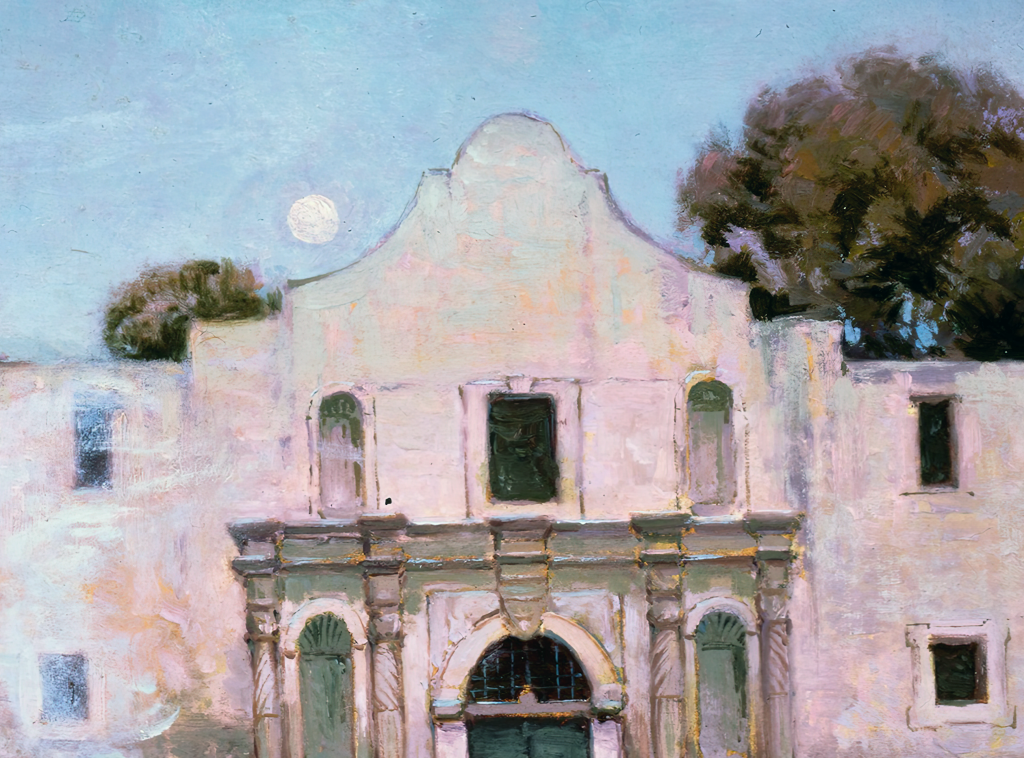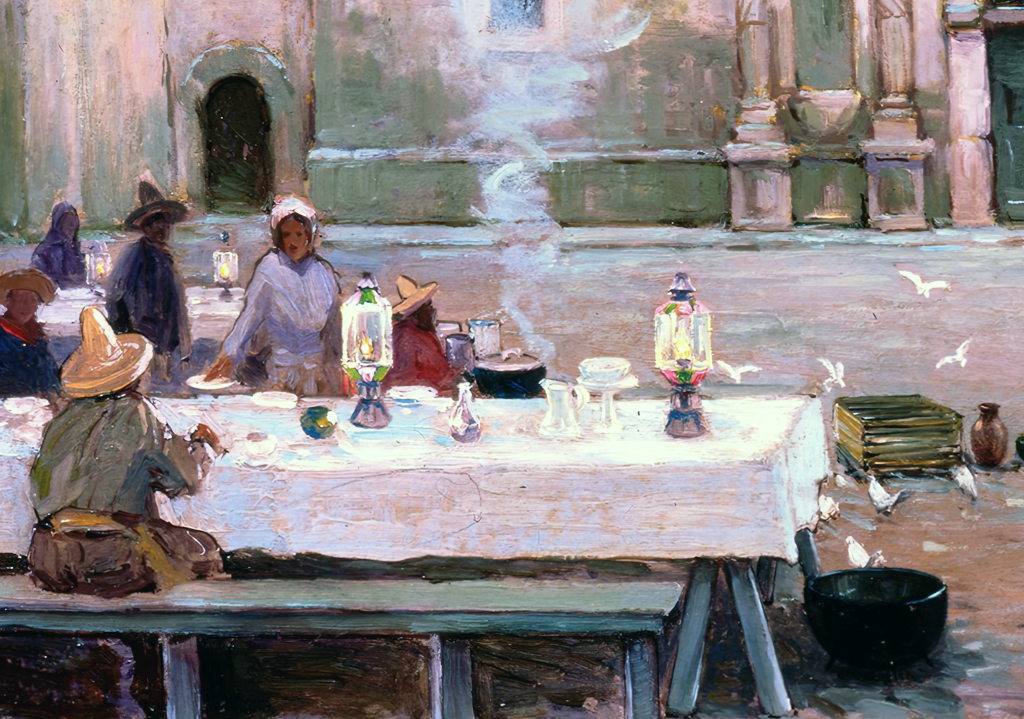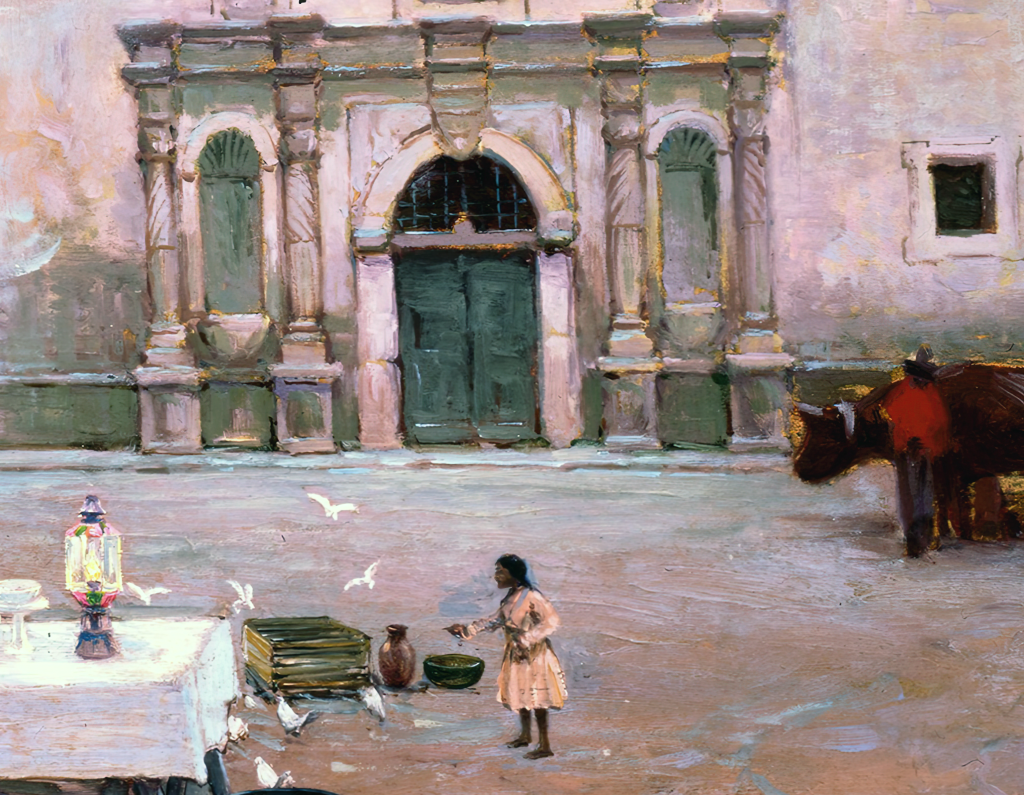
The Chili Queens of San Antonio were an institution for generations, from the time of the first cattle drives to just before the second world war.
They would set up on Alamo Plaza each day before dusk to feed hungry locals and visitors into the wee hours. The huge pots of chili (no beans) were cooked at home, then hauled to the plaza on carts or in wagons, where they were kept hot on mesquite fires.
You could have your bowl of chili with a side of beans and a tortilla for just a dime. Tamales were also available. There was no extra charge for lively conversation with the chili queen herself.
In the heyday of the Chili Queens, there was no light on Alamo Plaza after dark, except that of moon, stars and the colorful oil lamps set on each table.

It’s something Teddy Roosevelt would have known from his time recruiting the Rough Riders at the bar of the Menger Hotel. It was also seen by O’Henry and Stephen Crane, author of The Red Badge of Courage.
Crane wrote:
“In the soft atmosphere of the southern night, the cheap glass bottles upon the stands shine like crystal and lamps glow with a tender radiance. A hum of conversation ascends from the strolling visitors who are at their social shrine.”
Maury Maverick, the mayor of San Antonio who invented the term “gobbledygook”, recalled life in those days:
“Life in San Antonio was free and easy. The band played on the square in front of the Alamo, and San Antonians came out on the public square and walked around in circles just as they do in Mexico. In front of the Alamo there were chili stands.”

A Chili Queen Presides
The Chili Queens, almost all of whom were Tejanas, ruled the scene by force of personality.
A reporter in the San Antonio Express reminisced about those days:
"The rule of the chili queens presiding over the chili stands on the plazas was absolute.
Their tables were patronized by people of all walks of life. The banker touched elbows with the newsboy. The doctor sat by the farmer, the lawyer, judge and Sheriff sat next to the barber, the policeman and the porter.
Generally the chili queen reserved a seat near the center of the inner circle or bench for the newspaper reporter and the hackman, who were her particular protégés.
The bootblack also belonged to the inner circle, to which sometimes the musician, the actor and the gambler was admitted, but most of the patrons, and especially the politicians, had to take seats on the outer edge of the table."

This charming scene of moonlight on the Shrine of Texas Liberty was painted by Julian Onderdonk. It isn’t dated, but we can read the clues.
Onderdonk had to have painted it on some clear night after the facade of the old Hugo and Schmeltzer mercantile building was stripped from the Long Barrack in 1910, but before the second level came down in 1913.
Julian Onderdonk (1882-1922) was a native of San Antonio. Many say he is the best painter Texas ever produced. This is his only painting of the Alamo